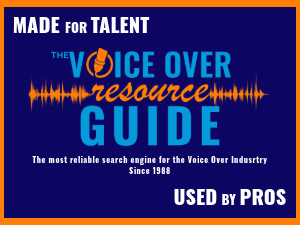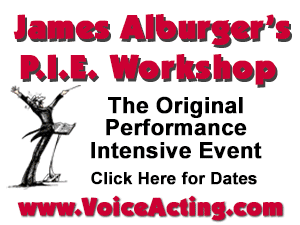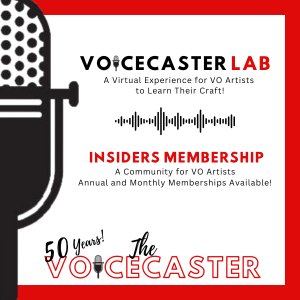|
The Power of the Pause: Let Your
Listeners Absorb What You Say
 By Mike Harrison By Mike Harrison Voice Actor
I'd like to offer some thoughts about what I call the "power of the pause," and how it's importance in effective communication needs to be kept in mind when recording and editing voice tracks.
When I began narrating and producing audio for corporate/industrial clients over 30 years ago, much of it was instructional material. Stuff that was to be used to train people in the use of specialized equipment, procedures; and/or motivate people to improve their selling skills, etc.
Because this material by it's very nature can be tedious to listen to, I learned very quickly the power of the pause.
RADIO CHATTER
Fast-forward to 1995. I was working in radio in Austin, Texas, just prior to the introduction of the computer-based audio workstations we have today.
There was a guy in town who produced a fair amount of the city's local radio commercials. While he had a decent enough voice, the thing about his commercials was that every single one of them, no matter the client, was produced in exactly the same manner.
Copy was written in very short phrases so they could be spoken without the need to take breaths. And every phrase, spot after spot, was spoken in the same, predictable manner.
After recording, all of the phrases would then be assembled in such a way that the beginning of one phrase "stepped on" the end of the previous phrase, making it sound as though he were interrupting himself.
By producing in this fashion, once the commercial began playing, not only was it an endless stream of chatter, but also not a single breath was taken.
To my ears, this "effect" became old – and very unlistenable – very quickly. It appeared as though he was selling his style more than he was his clients' products or services. Oops!
LISTEN TO SPEECHES
Because it is crucial to our success as voice-over talent or producer to be a good listener, the next time someone's giving a speech or a lecture, be sure to listen closely.
The experienced public speaker or instructor will, of course, take time to breathe, and they will obey the traffic signals of speech: punctuation.
But they will also, perhaps, pause a bit longer in those places where they feel the previously made point needs a moment or two for digestion. The small amount of time that a breath takes up provides a much-needed break to the listener.
Especially for training material, pauses help us absorb and contemplate the preceding statement.
Yes, words have power. But many times the lack of words can speak volumes, too.
TELL, NOT SELL
Advertising agencies spend a lot of time and money researching audience demographics prior to beginning a campaign for a client. They know what methods work (and what will not work) in attracting and holding an audience.
Thus, in voice-over, we are taught to "tell… not sell." No one likes to be hit over the head.
Look and listen to the difference between the national spots produced for the car manufacturers and the local spots produced for the neighborhood car dealerships. Which of the two will be more successful at convincing you to buy a car?
ANNOYING CHATTER
Endless chatter is annoying to listen to. And, especially in the case of instruction or selling, it can have the complete opposite effect: the listener will be driven away rather than be enticed to keep listening.
The practice of removing breaths - and the minimal space they take up - from spoken word productions such as commercials, corporate/industrial narrations, podcasts, etc. should be used ONLY briefly, for effect.
A perfect example of this would be broadcast imaging.
EDITING SUGGESTION
But while the complete removal of breaths does make a production sound unnatural, the mind can be fooled. If it desired to maintain the pace of a production, try this compromise:
It's not so much that we need to actually hear a speaker breathe, but we do need to have those momentary pauses - in the right places - to keep speech sounding natural.
And the more natural a speaker sounds, the greater the chances of retaining an audience.
KEEP 'EM LISTENING
So, whether interpreting the copy prior to voicing a spot, editing and/or producing the finished piece, our work is intended to fall upon the ears of a very specific audience.
And because reaching as much of that audience as possible - and holding their attention - is vital to the success of the work, my rule of thumb is to ALWAYS have the audience foremost in mind.
We can talk all we want. But communication is effective ONLY when there are people eagerly listening.
Since 1973, Mike Harrison has been writing, voicing and producing radio commercials, plus narrating and/or producing audio tracks for many Fortune 500 corporate/industrial clients. He was a two-time co-finalist, for copy and production, in the 1985 International Radio Festival of New York, and his voice is currently heard in various markets across the U.S. as well as in the United Kingdom. He is a member of Media Communications Association - International.
|
Tell Us What YOU Think!
Please Note: Since we check for spam, there will be a slight delay in the actual posting of your comment.
Comments
No comments have been posted yet. Hurry, and you could be the first!





.png)



click for new article alerts